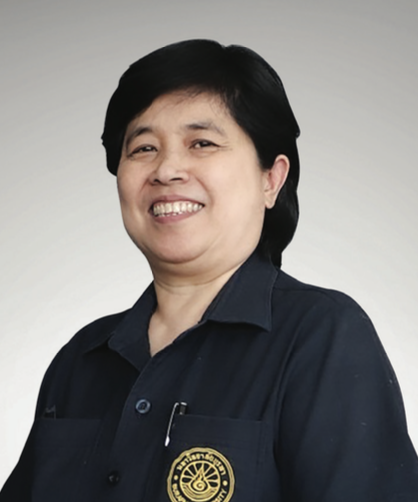Understanding Knowledge and Health Behaviors Regarding Noise Prevention Practices Among Workers in a Small Automotive Parts Manufacturer in Chonburi Province
Main Article Content
Abstract
OBJECTIVES: This study aimed to investigate the interplay between workplace knowledge, health belief factors, and noise prevention practices among workers in a small automotive parts manufacturer located in Chonburi province.
MATERIALS AND METHODS: The study targeted employees of the aluminum melting department within the manufacturer, totaling 52 participants. Data collection utilized an online questionnaire.
RESULTS: The result showed that the majority of this sample group was male (78.85%), with an age range of 20–39 years (84.62%), predominantly single (59.62%), and held educational qualifications ranging from junior high school to vocational certificates (67.31%). A significant portion reported exposure to noise during work for 6–10 hours per day (48.08%), with experience in the aluminum melting department spanning between 1 and 5 years (80.77%). Overall, a high level of knowledge regarding workplace noise prevention (78.85%), positive health beliefs (76.92%), and adherence to noise prevention practices (90.38%) was observed. Overall health belief with the correlation with noise prevention practice was statistically significant at 0.01 (p < 0.001, r = 0.550).
CONCLUSION: Based on these results, it was suggested that employees must be educated on noise prevention and the correct use of proper noise prevention methods on the job, such as noise protection devices. In addition, promoting awareness and practices for mitigating noise-related hazards is essential for addressing this pertinent issue in the future.
Article Details

This work is licensed under a Creative Commons Attribution-NonCommercial-NoDerivatives 4.0 International License.
This is an open access article distributed under the terms of the Creative Commons Attribution Licence, which permits unrestricted use, distribution, and reproduction in any medium, provided the original work is properly cited.
References
Thai Government. Thailand “TOP 10” countries that produce automobiles for the world market [Internet]. 2022. (Accessed March 14, 2023, at https://www.thaigov.go.th/infographic/ contents/details/5071).
Federation of Thai Industries. Statistics on production, sales, and exports of the Thai automotive industry [Internet]. 2021. (Accessed March 17, 2023, at https://tinyurl.com/36m6tzet).
Research and Market. Research report on Thailand’s automobile industry, 2022-2031 [Internet]. 2022. (Accessed March 14, 2023, at https://www.researchandmarkets.com/reports/5639699/research-report-on-thailands-automobile#srcpos-1).
Leenutaphong V, Sornsaruht P, Deebhijan S. An analysis of the Thai automotive parts small-medium enterprise (SME) productivity development process. J Arch. Egyptol 2021;18(7):4467-81.
NPCS. Production of automobile components. Auto parts manufacturing industry [Internet]. 2022. (Accessed March 14, 2023, at https://www.entrepreneurindia.co/Document/ Download/Production%20of%20Automobile%20Components.%20Auto%20Parts%20Manufacturing%20Industry.%20-327301-.pdf ).
Forouharmajd F, Shabab M. Noise pollution status in a metal melting industry and the map of its isosonic curve. Jundishapur J Health Sci. 2015;7(4):46-50. doi: 10.17795/jjhs-30366
Ministerial regulations on the prescribing of standard for administration and management of occupational safety health and environment in relation to heat, light and noise.B.E. 2549.2006:111-25. (Accessed March 14,2023, at https://osh. labour.go.th/index.php?option=com_phocadownload&- view=category&id=34:%E0%B9%92%E0%B9%95%E0%B 9%95%E0%B9%97-%m-%E0%B9%92%E0%B9%90- %E0%B9%90%E0%B9%92-%M-%S&Itemid=186)
Mahawan K, Chanthon W, Srivieng P, Evaluation of noise levels and noised- induced hearing loss among lumber mill workers: A case study at Nakrua Sub-district, Maetha District, Lampang Province. Thammasat Med J. 2019;19: S64-76.
Compensation Fund Office Social Security Office Ministry of Labor. Situations of experiencing danger or illness due to work, years 2016 - 2020 [Internet]. 2021 (Accessed March 10, 2023, at https://www.sso.go.th/wpr/assets/upload/files_ storage/sso_th/5ebe42693bf27ca624d2a14a89f99223.pdf)
Matbandit C. Behavior to prevent danger from noise of employees in the sugar industry. J Public Health Health Sci. 2017;1(1):17-33. 11. Thepaksorn P, Siriwong W, Neitzel RL, et al. Relationship between noise-related risk perception, knowledge, and the use of hearing protection devices among para rubber wood sawmill workers. Saf Health Work. 2017;9(1):25-9. doi: 10.1016/j. shaw.2017.06.002.
Srisomsak S. A study of the relationship between health beliefs and occupational hazard prevention behavior of employees in an automobile parts factory. Rayong Province. Burapha University, Chonburi. 2014.
Saunders GH, Dann SM, Griest SE, et al. Development and evaluation of a questionnaire to assess knowledge, attitudes, and behaviors towards hearing loss prevention. 2014. Int J Audiol 2014;53(4):209-18. doi: 10.3109/ 14992027.2013.860487.
Tanaprakob S, Singkles N. Prevalence of noise-induced hearing loss in ambulance nurses. BKK Med J. 2016;12:15-20. doi:10.31524/bkkmedj.2016.09.003
Keppler H, Dhooge I, Vinck B. The effects of a hearing education program on recreational noise exposure, attitudes, and beliefs toward noise, hearing loss, and hearing protector devices in young adults. Noise Health. 2015;17(78):253-62. doi: 10.4103/1463-1741.165028.
Shannon J, Kunanusont C, Rein J, et al. Raising the bar for occupational health care through international health alliance: A twinning framework to enhance and expand occupational health services at Bangkok Dusit Medical Services. BKK Med J. 2017;13(2):101-11. doi:10.31524/bkkmedj.2017.09.019.
Becker MH, Maiman LA. The health belief model and personal health behavior. Health Educ Monogr. 1974;2:324- 508.


